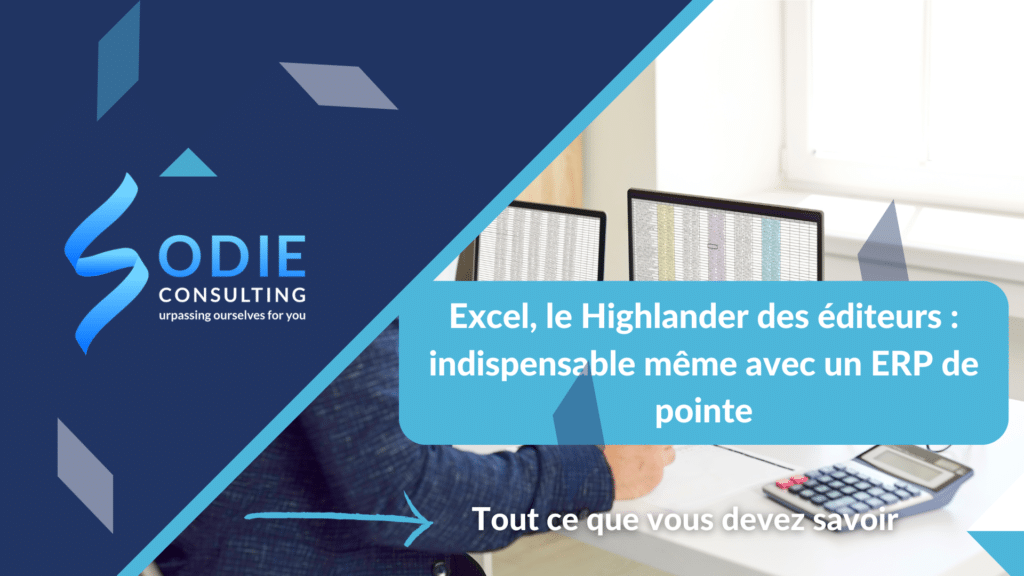Excel, the Highlander of editors: indispensable even with cutting-edge ERP.

Despite the massive investment in sophisticated Enterprise Resource Planning (ERP) systems, many large corporations continue to rely on Microsoft Excel for certain critical tasks.
This article explores why Excel remains indispensable in the landscape of enterprise management tools, even when more complex and costly solutions are in place.
Flexibility and agility of Excel
One of Excel’s main strengths lies in its flexibility and ease of use. In an environment where governance is constantly evolving and tracking needs frequently change, Excel offers an adaptability that ERP systems often cannot match quickly. For ERP users, even making a 90-degree turn in an ERP requires careful preparation, adjusting numerous settings, and sometimes specific software development.
On the other hand, with Excel, all it takes is opening a new sheet, designing a model tailored to the new needs, and immediately starting to work.
Quick response to ad hoc requests
ERPs are designed to manage company operations in a standardized and secure manner, but they can be rigid when it comes to responding to ad hoc requests or providing customized analysis quickly. Excel, in comparison, allows users to create and manipulate data for special reports or one-time analyses without the need for IT department intervention or deep modifications in the ERP system.
ERP and Excel: Complementarity rather than substitution
Implementing an ERP does not necessarily result in the elimination of Excel. For daily and structured tasks, the ERP offers reliability and efficiency that are essential for the smooth operation of a large company’s activities. However, for exploratory analyses, financial simulations, or complex calculations that need frequent adjustments, Excel is often more appropriate.
Integration of recurring tasks into the ERP
When some tasks initially performed in Excel become permanent and recurring, it is wise to integrate them into the ERP.
This migration ensures information reliability and productivity gain, as the ERP can automate and secure the processing of regular data.
This integration must be done carefully to ensure that processes are well understood and properly configured in the ERP system.
Conclusion
Excel, despite the emergence of advanced technologies, remains an indispensable tool in the arsenal of modern enterprises. It offers flexibility and quick response capabilities that complement the robust and integrated functionalities of ERP systems.
By recognizing the strengths of each tool and using them complementarily, organizations can maximize their operational efficiency while remaining agile and adaptive to changes.
Just because you have an advanced ERP doesn’t mean you have to give up the flexibility offered by Excel.
The judicious use of these tools in tandem is essential for effectively navigating the complex and changing landscape of modern business.
